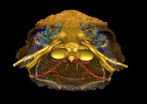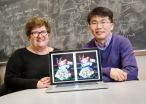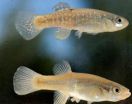(Press-News.org) A retrospective, 20-year study led by researchers at Plymouth University Peninsula Schools of Medicine and Dentistry shows that in up to 85 per cent of patients with chronic obstructive pulmonary disease (COPD) the underlying disease was being overlooked. Missed opportunities occur commonly in both primary and secondary care. The paper demonstrates the pointers to help GP to come to a earlier diagnosis. The findings are published in The Lancet Respiratory Medicine today, Thursday 13th February 2014.
The study encompassed almost 39,000 patients and showed that, in the UK, opportunities to diagnose COPD are frequently missed in both primary and secondary care settings.
The study was led by Dr. Rupert Jones, Clinical Research Fellow at Plymouth University Peninsula Schools of Medicine and Dentistry and a working GP in Plymouth.
He said: "This was a project which came from my work with the Department of Health, on the National COPD outcomes strategy - a stream of work which I have been involved in since 2005. We became acutely aware that many people were being diagnosed with COPD, a progressive and disabling lung disease, at a late stage when the damage done was severe and irreversible. Thus we wanted to examine the opportunities arising in primary care in order to diagnose COPD at an earlier stage and improve health outcomes, with potential to extend life expectancy and quality of life for patients."
The research team used data from the General Practice and Optimum Patient Care Research databases. They assessed whether a diagnosis of COPD could have been made in an earlier visit to a doctor, whether in a primary or secondary care setting. From the databases 38,849 patients aged 40 or older and who had received a diagnosis for COPD were identified. The diagnoses had been made between 1990 and 2009 and for each data was available at least two years before and one year after diagnosis.
Results showed that in the five years before diagnosis, 85 per cent of patients had visited their GP at least once with lower respiratory symptoms without the diagnosis of COPD being made. Opportunities for diagnosis were missed in 58 per cent of patients in the six to 10 years before diagnosis, and in 42 per cent in the 11 to 15 years before diagnosis.
The study identified that, over the 20 year study period, there was a significant increase in the number of chest X-rays in the two years prior to diagnosis, but that only a third of those patients were given spirometry testing (a breathing test used to diagnose lung conditions and which measures how well the lungs work.
It is estimated that around 2.2 million people in the UK remain undiagnosed for COPD. The UK Department of Health estimates that earlier diagnosis and treatment could save the NHS more than £1 billion over 10 years.
Said Dr. Jones: "The numbers are large, both in terms of people affected and the cost to already stretched NHS provision of care. We believe that the results of our study provide clear support to the argument for improved identification and diagnosis of COPD in general practice, with greater awareness so that early opportunities to diagnose – such as presentation with lower respiratory tract symptoms or related conditions – are seized and acted upon."
INFORMATION:
11th February 2014
A link to the full article and comment for journalists is available at http://press.thelancet.com/PDF.com
A link to a free abstract of the paper will be made available to members of the general public at the time of publication
Doctors are missing chance to diagnose COPD in up to 85 percent of cases, study finds
2014-02-13
ELSE PRESS RELEASES FROM THIS DATE:
Cancer researchers discover pre-leukemic stem cell at root of AML, relapse
2014-02-13
(TORONTO, Canada – Feb. 12, 2014) – Cancer researchers led by stem cell scientist Dr. John Dick have discovered a pre-leukemic stem cell that may be the first step in initiating disease and also the culprit that evades therapy and triggers relapse in patients with acute myeloid leukemia (AML).
The research, published online today in Nature is a significant leap in understanding the steps that a normal cell has to go through as it turns into AML, says Dr. Dick, and sets the stage to advance personalized cancer medicine by potentially identifying individuals who might benefit ...
Jaw dropping: scientists reveal how vertebrates came to have a face
2014-02-13
A team of French and Swedish researchers have presented new fossil evidence for the origin of one of the most important and emotionally significant parts of our anatomy: the face. Using micron resolution X-ray imaging, they show how a series of fossils, with a 410 million year old armoured fish called Romundina at its centre, documents the step-by-step assembly of the face during the evolutionary transition from jawless to jawed vertebrates. The research is published in Nature on 12 February 2014.
Vertebrates, or backboned animals, come in two basic models: jawless and ...
Advanced techniques yield new insights into ribosome self-assembly
2014-02-13
CHAMPAIGN, Ill. — Ribosomes, the cellular machines that build proteins, are themselves made up of dozens of proteins and a few looping strands of RNA. A new study, reported in the journal Nature, offers new clues about how the ribosome, the master assembler of proteins, also assembles itself.
"The ribosome has more than 50 different parts – it has the complexity of a sewing machine in terms of the number of parts," said University of Illinois physics professor Taekjip Ha, who led the research with U. of I. chemistry professor Zaida Luthey-Schulten and Johns Hopkins University ...
Teledermatology app system offers efficiencies, reliably prioritizes inpatient consults
2014-02-13
PHILADELPHIA - A new Penn Medicine study shows that remote consultations from dermatologists using a secure smart phone app are reliable at prioritizing care for hospitalized patients with skin conditions. Researchers in the Perelman School of Medicine at the University of Pennsylvania report in JAMA Dermatology that this teledermatology process is reliable and can help deliver care more efficiently in busy academic hospitals and potentially in community hospital settings.
A national shortage and uneven distribution of dermatologists in the United States has caused scheduling ...
Stirring-up atomtronics in a quantum circuit
2014-02-13
VIDEO:
This is an animation showing a laser beam stirring a ring shaped quantum gas.
Click here for more information.
Atomtronics is an emerging technology whereby physicists use ensembles of atoms to build analogs to electronic circuit elements. Modern electronics relies on utilizing the charge properties of the electron. Using lasers and magnetic fields, atomic systems can be engineered to have behavior analogous to that of electrons, making them an exciting platform for studying ...
Ancient settlements and modern cities follow same rules of development, says CU-Boulder
2014-02-13
Recently derived equations that describe development patterns in modern urban areas appear to work equally well to describe ancient cities settled thousands of years ago, according to a new study led by a researcher at the University of Colorado Boulder.
"This study suggests that there is a level at which every human society is actually very similar," said Scott Ortman, assistant professor of anthropology at CU-Boulder and lead author of the study published in the journal PLOS ONE. "This awareness helps break down the barriers between the past and present and allows us ...
America's only Clovis skeleton had its genome mapped
2014-02-13
They lived in America about 13,000 years ago where they hunted mammoth, mastodons and giant bison with big spears. The Clovis people were not the first humans in America, but they represent the first humans with a wide expansion on the North American continent – until the culture mysteriously disappeared only a few hundred years after its origin. Who the Clovis people were and which present day humans they are related to has been discussed intensely and the issue has a key role in the discussion about how the Americas were peopled. Today there exists only one human skeleton ...
New target for psoriasis treatment discovered
2014-02-13
Researchers at King's College London have identified a new gene (PIM1), which could be an effective target for innovative treatments and therapies for the human autoimmune disease, psoriasis.
Psoriasis affects around 2 per cent of people in the UK and causes dry, red lesions on the skin which can become sore or itchy and can have significant impact on the sufferer's quality of life.
It is thought that psoriasis is caused by a problem with the body's immune system in which new skin cells are created too rapidly, causing a build up of flaky patches on the skin's surface. ...
Two parents with Alzheimer's disease? Disease may show up decades early on brain scans
2014-02-13
MINNEAPOLIS – People who are dementia-free but have two parents with Alzheimer's disease may show signs of the disease on brain scans decades before symptoms appear, according to a new study published in the February 12, 2014, online issue of Neurology®, the medical journal of the American Academy of Neurology.
"Studies show that by the time people come in for a diagnosis, there may be a large amount of irreversible brain damage already present," said study author Lisa Mosconi, PhD, with the New York University School of Medicine in New York. "This is why it is ideal ...
Solving an evolutionary puzzle
2014-02-13
For four decades, waste from nearby manufacturing plants flowed into the waters of New Bedford Harbor—an 18,000-acre estuary and busy seaport. The harbor, which is contaminated with polychlorinated biphenyls (PCBs) and heavy metals, is one of the EPA's largest Superfund cleanup sites.
It's also the site of an evolutionary puzzle that researchers at Woods Hole Oceanographic Institution (WHOI) and their colleagues have been working to solve.
Atlantic killifish—common estuarine fishes about three inches long—are not only tolerating the toxic conditions in the harbor, they ...




